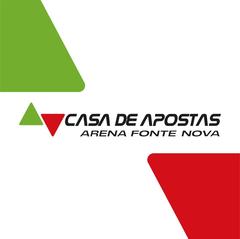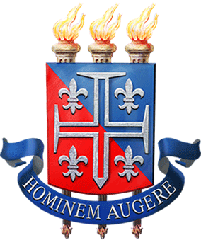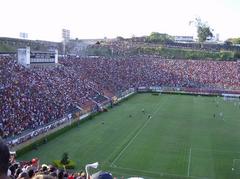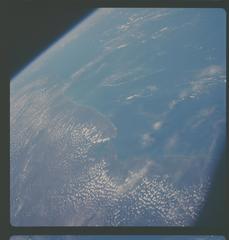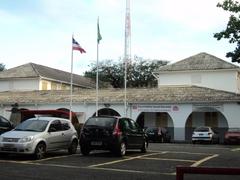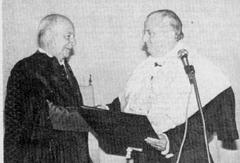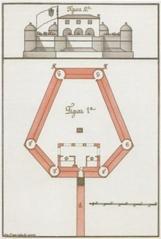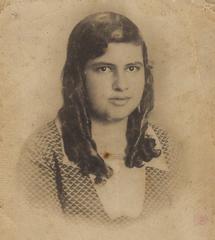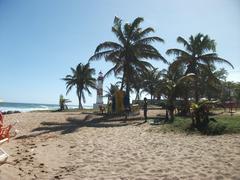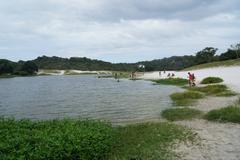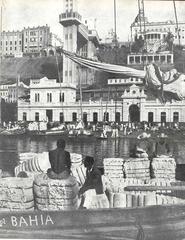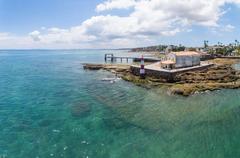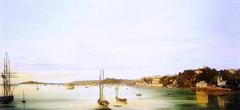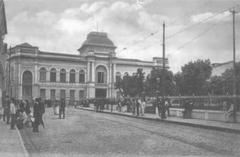Morro do Cristo Visiting Hours, Tickets, and Travel Guide in Salvador, Brazil
Date: 14/06/2025
Introduction to Morro do Cristo
Morro do Cristo, located in the lively Barra neighborhood of Salvador, Bahia, is a celebrated landmark that seamlessly blends natural beauty, historical depth, and rich cultural significance. Crowned by a seven-meter-tall Carrara marble statue of Christ the Redeemer—sculpted by renowned Italian artist Pasquale De Chirico and inaugurated in 1920—this monument predates Rio de Janeiro’s famed Christ statue and stands as a testament to Salvador’s enduring Christian traditions intertwined with Afro-Brazilian cultural expressions (Bahia Turismo; Cronicas Macaenses). Beyond its religious symbolism, Morro do Cristo is a vibrant gathering place for locals and tourists alike, offering breathtaking panoramic views, community events, and a taste of Salvador’s unique syncretic spirituality (Correr Es Mi Destino; Live More Travel More).
Over the years, the site has undergone significant restoration and modernization, including the addition of a striking glass pedestal and family-friendly attractions like a zipline. Its strategic position at the junction of historic and recreational sites—such as Praia do Farol da Barra and the Farol da Barra Lighthouse—makes it a perfect starting point to explore Salvador’s dynamic urban landscape (mytravelation.com; gotraveltipster.com).
This detailed guide will provide you with essential information for visiting Morro do Cristo, including history, preservation efforts, practical visitor tips, accessibility, and nearby attractions.
Table of Contents
- Historical Background and Preservation
- Visitor Information
- Cultural and Religious Significance
- Nearby Attractions
- Frequently Asked Questions (FAQ)
- Conclusion
- References
Historical Background and Preservation
Origins and Early History
Morro do Cristo’s iconic statue, known as “Monumento a Jesus, o Salvador,” was sculpted by Pasquale De Chirico and inaugurated on December 24, 1920, making it one of Brazil’s earliest monumental Christ figures (Bahia Turismo). Initially placed on Morro do Camarão, a nearby hill, its position offered spiritual and visual prominence for the city named after the “Savior” (Cronicas Macaenses).
Relocation and Urban Development
In 1967, due to urban development, the statue was relocated to its current site atop Morro do Cristo. This move enhanced its visibility and accessibility, transforming the area into a multifunctional urban park and spiritual landmark (Cronicas Macaenses).
Artistic and Material Significance
The statue, crafted from Carrara marble, stands atop a modern glass pedestal (introduced in 2018), giving the illusion of the figure floating above the ocean. De Chirico’s classical design harmonizes with Salvador’s local context, blending European artistry with Bahian spirituality (Bahia Turismo).
Preservation and Restoration Efforts
Morro do Cristo was designated a protected heritage site in 2017, ensuring preservation under municipal guidelines (Cronicas Macaenses). In 2018, a major restoration project upgraded the statue, pedestal, and access paths, improved lighting and security, and introduced a 110-meter zipline—an attraction appealing to adventurous visitors (Correio 24 Horas). The restoration emphasized accessibility and sustainability while preserving historical authenticity.
Visitor Information
Visiting Hours and Tickets
- Hours: Morro do Cristo is open daily, generally from 7:00 AM to 7:00 PM. For the best experience, visit during daylight hours and avoid late-night stays (tourb.com.br).
- Tickets: Access to the hill and statue is free. The zipline attraction requires a separate ticket, available on-site or online.
Accessibility
Paths have been upgraded for safety and partial accessibility, including granite walkways and improved lighting. However, the hill’s natural slopes present some limitations for wheelchair users.
Getting There
- On Foot: Morro do Cristo is an easy walk from central Barra and Praia da Barra along Avenida Oceânica (omundoepequenoparamim.com.br).
- Public Transport: Several bus lines run to Barra with stops near Morro do Cristo (evendo.com).
- Taxi/Ride-Sharing: Easily accessible via taxi or apps like Uber, with a short ride from most of Salvador’s main districts (gotraveltipster.com).
Amenities and Facilities
- Green Spaces: Expansive grassy areas for picnics and relaxation; bring a mat or towel.
- Food and Drinks: Street vendors offer Bahian snacks and drinks; several restaurants are nearby (tourb.com.br).
- Restrooms: No on-site facilities; use those at nearby beaches, bars, or restaurants.
- Seating: No formal benches; the grass serves as informal seating (bahiaterra.com).
- Security: Daytime visits are generally safe with visible police presence, especially on weekends and holidays (tourb.com.br).
Practical Tips
- Best Times: Early mornings and late afternoons offer cooler temperatures and fewer crowds. Sunset is especially popular.
- What to Bring: Sunscreen, water, hat, mat/towel, and camera.
- Weather: Salvador’s tropical climate means year-round warmth with occasional rain—bring an umbrella if needed (postcardfromtaylor.com).
- Safety: Avoid isolated areas after dark and keep personal belongings secure.
Cultural and Religious Significance
Morro do Cristo is a living symbol of Salvador’s syncretic spiritual traditions, where Catholic devotion intertwines with Afro-Brazilian faiths like Candomblé (Bahia Turismo). The site is animated by baianas in traditional white dress selling acarajé, capoeira demonstrations, and community gatherings. During religious festivals, the monument becomes a site of reflection and celebration, embodying Salvador’s unique cultural fabric (Correr Es Mi Destino; Live More Travel More).
Nearby Attractions
- Praia do Farol da Barra: Ideal for swimming, sunbathing, and water sports.
- Farol da Barra Lighthouse: Historic lighthouse with a maritime museum and panoramic views.
- Porto da Barra Beach: Popular for calm waters and vibrant local culture.
- Dique do Tororó: Lagoon featuring sculptures of orixás, reflecting Salvador’s Afro-Brazilian heritage.
- Pelourinho: UNESCO-listed historic center with colonial architecture and cultural venues.
- Mercado Modelo: Bustling market for crafts, souvenirs, and Bahian food.
- Solar do Unhão: Museum of Modern Art and sunset dining spot by the bay.
- Rio Vermelho: Salvador’s nightlife hub, known for live music and festivals (mytravelation.com; gotraveltipster.com).
Frequently Asked Questions (FAQ)
Q: What are Morro do Cristo’s opening hours?
A: Generally, 7:00 AM to 7:00 PM daily.
Q: Is there an entrance fee?
A: No, access is free. The zipline is ticketed.
Q: Are there guided tours?
A: Yes, local tour operators often include Morro do Cristo in Barra neighborhood tours.
Q: Is the site accessible for people with limited mobility?
A: Walkways are improved, but natural slopes may pose challenges.
Q: Are there restrooms on-site?
A: No, use facilities at nearby beaches or restaurants.
Q: Can I have a picnic at Morro do Cristo?
A: Yes, the grassy areas are ideal for picnics.
Conclusion
Morro do Cristo stands as a multifaceted symbol of Salvador’s history, culture, and faith. With its breathtaking vistas, welcoming atmosphere, and free public access, it is a must-visit for anyone exploring Salvador. Whether you seek spiritual reflection, cultural immersion, or simply a spectacular sunset, Morro do Cristo offers an enriching experience. Be sure to visit responsibly, respect local customs, and take advantage of the many attractions in the vibrant Barra neighborhood.
For updated information, guided tours, and insider tips, download the Audiala app or consult Salvador’s official tourism channels.
